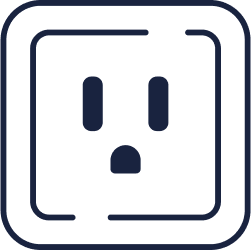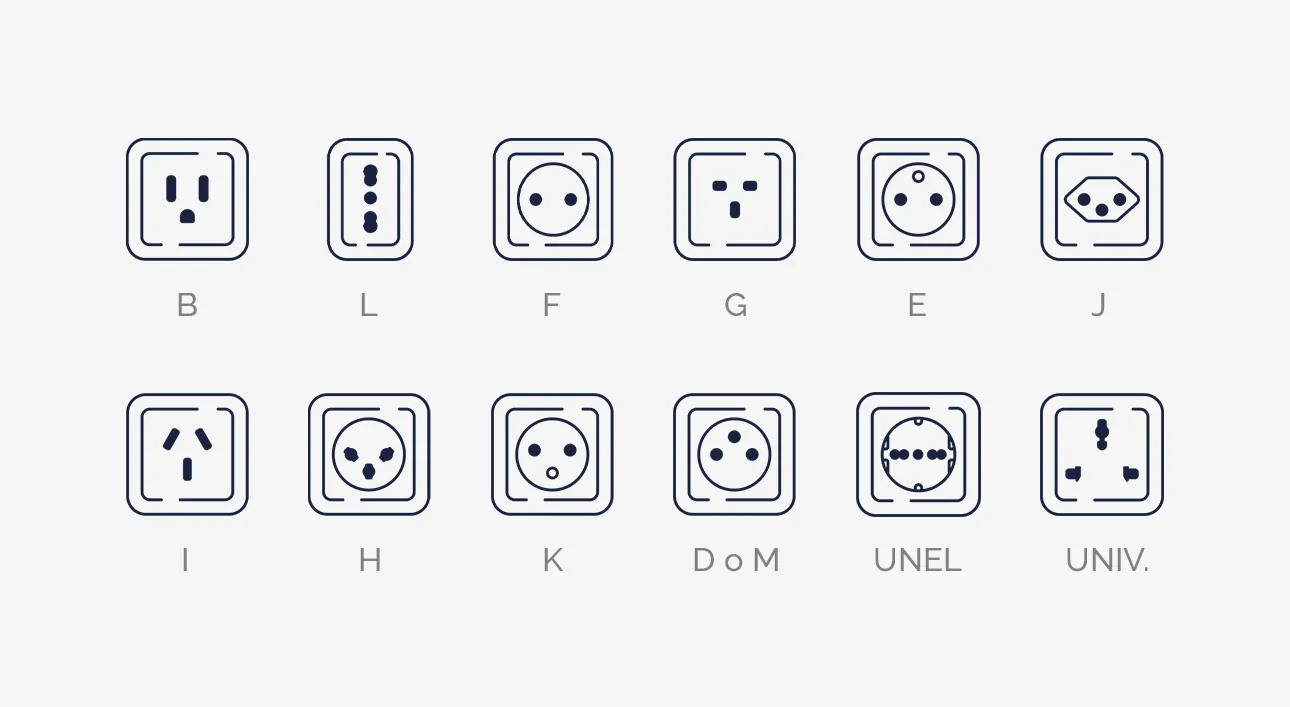Request information
For large buyers or companies it is possible to have price lists with different prices and payment terms.
Sockets allow the connection between the utilities and the electrical system and are crucial for devices and appliances correct functioning, no matter where they are placed.There is a wide range of sockets that adapt to the standards of the country of reference: the sockets in Italy are regulated by the CEI 23-50 standard that sets the technical features of the various types of plugs and sockets and any related tables aimed at standardization. Read our in-depth analysis and discover all the different types of sockets available in Italy and abroad, their features, how to recognize them and other information!
Sockets allow the connection between the utilities and the electrical system and are crucial for devices and appliances correct functioning, no matter where they are placed.
It is the end of a system and allows the access to the energy through a specific cables system.
There is a wide range of sockets that adapt to the standards of the country of reference: the sockets in Italy are regulated by the CEI 23-50 standard that sets the technical features of the various types of plugs and sockets and any related tables aimed at standardization.
Read our in-depth analysis and discover all the different types of sockets available in Italy and abroad, their features, how to recognize them and other information!
All sockets have different features depending on their type and country of origin: Italian, Swiss, American, German and other models and all corresponding adapters.
They are constantly powered and feature holes (intended to house the plugs of the devices they will supply) to which the corresponding cables are connected.
Each country has its own standards that determine differences in current load (expressed in Ampere and corresponding to a power in Watt), shape, number of contacts and size.
Read our guide and discover all different sockets.
In North and Central America and in the Japanese archipelago you find two types of 120 Volt sockets:
They are very similar to those used in the UK, with thinner blades and can be used with universal adaptors.

In Italy the type C socket is ordinary, powered by 1.5 mm section cables and with 2 or 3 4 mm diameter symmetrical holes. It can deliver current of up to 10 A with a maximum power of 2000 W. It is recommended not to connect energy-intensive appliances via a Schuko adapter or triple plug, thus avoiding possible overheating. The second Italian model is the L socket one, more performing than the Type C.
It is homologated for 16 amps and supports power up to 3.5kW, has larger diameter holes and is compatible with 2.5mm lead wire. You can use it for powerful appliances such as electric ovens and dishwashers.

The Schuko socket, also known as F socket, is easily recognizable through the two horizontal holes and can deliver up to 16 Ampere. In this case, the grounding hole is replaced by two lateral contacts. It is ideal for powering large household appliances, PCs, monitors and other energy-intensive devices.
It is used in Germany, Austria, the Netherlands, Spain, Sweden, Norway, Finland, Portugal, and Eastern Europe, and has now become (with the E-type socket) the European standard.

The English socket is used in the UK, the Commonwealth and former British colonies, including Hong Kong and India. It supplies 240V and features three holes arranged in a triangle: two horizontal rectangular ones and a vertical one for earthing system. It has a fuse that can be 3, 5 or 13 Ampere and protects the connected device.

The French socket is analogous to the Schuko and is Europe's second most heavily used. It features two holes, and the fundamental difference is that a male connector acts as an earthing system.

The Swiss socket has features similar to the Italian L model: it has three holes arranged in a triangle and can adapt well to Italian-type C bipolar plugs.

The Chinese and Australian socket is used also in Argentina: it has rectangular holes and two poles of the current to create a V. It supplies from 10 to 20 Ampere.

H sockets feature large holes in the centre to house the round pin version of the Type C plug. The Type H plug can be very dangerous as it lacks insulation to protect against electric shock.
It is currently being replaced in favour of a model with round pins.

In Denmark, in addition to models C, E, and F, the K socket is also used: similar to the German F socket, it features three poles, but the difference lies in the use of a third pin for the earthing system instead of the two tabs of the Schuko. The Government bodies have approved the use of the Schuko socket in Denmark, and therefore, the K model will progressively disappear.

Type D socket features three large round prongs arranged in a triangle with a nominal output of 5 Amps.
M-type plugs are used in conjunction with Type D sockets for larger appliances. That's why some plugs work with both Types D and M.

The European UNEL socket has two cylindrical contacts of 4.8 mm in diameter for the phase and neutral contacts and supports both German and Italian 3-pole plugs (including an earthing system). It can connect loads up to 16Amps in 220V alternating current circuits. The combination of UNEL plugs and sockets is very safe.

It is used in the same countries as socket A and C and is also known as Europlug: it is the Italian socket with two poles, without earth pin. It is used in many European countries and is the most widespread internationally.

Schuko socket, also known as CEE7/4, is currently used in most European countries because live parts are well protected and can connect household appliances, gardening tools and electric vehicle charging.
This socket ensures total safety: its structure makes accidental contact between the hand and the pins of the socket impossible.
It has progressively become the standard European socket as it represents the solution adopted by manufacturers for a wide range of small and large household appliances currently on the market.
The CEI 64-8 standard lays the application standard of this type of socket in kitchens and washing machines connection to completely eliminate the use of adapters.
Refrigerators, washing machines, ovens, dryers, dishwashers, appliances that absorb a lot of energy are usually powered by a Franco-German socket, which allows their use in all countries of the European Union.
READ ALSO:
USB Type-C socket: The future of data and power transmission
There are currently 15 different types of sockets available to which, as we have saw earlier, different letters are associated.
Schuko or C sockets are mainly used in Italy and in most European countries.
The most widespread in the world (where the mains power supply is generally between 220 and 240 volts) are the A and C models.
For large buyers or companies it is possible to have price lists with different prices and payment terms.
